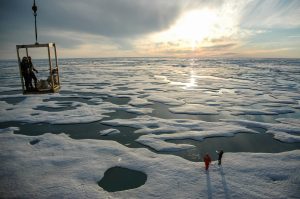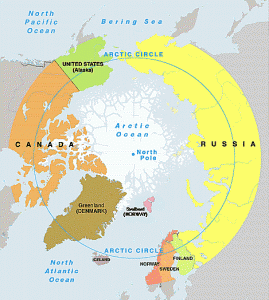The U.S. Arctic Observing Network (U.S. AON) mobilizes independent U.S. agency observing efforts towards an integrated understanding of and informed response to a rapidly changing Arctic environment. U.S. AON is collaborating with international partners to develop a unified Arctic observing framework to strategically maximize societal, political, cultural, and economic benefits from Arctic observations across Federal agencies and their partners.
Successful integration of Arctic observations through US AON will equip decision makers regionally and globally with salient, timely and reliable knowledge in support of stewardship, life and property, livelihoods, and national security interests. The network’s outputs will provide high-quality scientific data to further advance our understanding of Arctic change and its global implications.
The National Oceanic and Atmospheric Administration (NOAA) funds the U.S. AON Office to work synergistically throughout NOAA offices, across Federal agencies, with the State of Alaska and Alaskan Native Tribes, academia, industry, and international partners like the Sustainable Arctic Observing Network (SAON) and the Group on Earth Observations (GEO).
Organizationally, the Federal U.S. AON Board is recognized as the critical observing “intersection” of the Interagency Arctic Research Policy Committee (IARPC), which was established by Congress to coordinate all Federal agencies engaged in Arctic research. The board is chaired by NOAA, with NSF, EPA, NASA, DOI, DOE, and ONR all leading relevant tasks to fully realize the U.S. AON mission. U.S. AON works with and through IARPC Collaborations to reach the broadest community of talent both in- and outside of government.
U.S. AON Federal Agency Partners:
- National Oceanic and Atmospheric Administration
- National Science Foundation
- Environmental Protection Agency
- National Aeronautics and Space Administration
- U.S. Department of the Interior
- U.S. Department of Energy
- Office of Naval Research
The U.S. AON Executive Director works with the Board to shape partnership activities to achieve shared success. This is done through two distinct, but inter-related opportunities.
- U.S. AON Tasks: Targeted activities to mobilize observations towards products and services in key areas including sea-ice forecasting and marine transportation planning.
- An International AON Framework: A unified, systems-level view of current and required Arctic observing activities driven by scientific and societal needs.
Both approaches are systematic, yet leave ample room for the community to define and shape their development, and for agencies to work on their own priority areas to advance the larger partnership interest. Each opportunity methodically supports a dozen societal benefit areas (SBAs) to assure that the ultimate goal of an established and operational U.S. AON is realized.
U.S. AON exemplifies and encourages its overseas partners to establish similar efforts that foster a collective international AON that is robust and effective for the benefit of all Arctic nations’ economic, environmental, human, and climate needs for future generations. (The United States, Canada, Russian Federation, the Kingdom of Denmark, Finland, Iceland, Norway, and Sweden)



